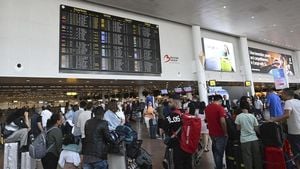The Brazilian government's educational initiative, Pé-de-Meia, is set to distribute its first payments to qualifying students this February, as announced by the Minister of Education, Camilo Santana. The program, which aims to support nearly 4 million public high school students who completed their academic year, will provide each eligible student with R$ 1,000 as part of their educational benefits. "We will pay the first installment to those who passed the year and completed high school. The R$ 1,000 will be deposited this month in their accounts," Santana shared on social media platform X.
Pé-de-Meia, intended to function as both an immediate financial support system and future savings for students, provides significant monetary encouragement to promote academic persistence among youths. Each student is entitled to receive R$ 1,000 at the end of each year of study, which can only be accessed after they graduate from high school. Beyond this annual incentive, students also benefit from monthly payments of R$ 200 upon proving enrollment and attendance.
This announcement follows the recent release of R$ 6 billion by the Tribunal de Contas da União (TCU), which had previously blocked these funds due to budgetary concerns. The TCU's decision, made on February 12th, allows the government to proceed with the planned payments and reinforces the importance of educational policies focused on reducing dropout rates. "The tribunal granted the government 120 days to regularize the program and incorporate expenditures within the 2025 budget," detailed the TCU.
The program's financial structure aims not only to assist families struggling to afford educational expenses—like transportation, materials, and meals—but also to encourage their children to stay enrolled and even aspire to higher education. With increasing concerns over educational inequality, the government considers Pé-de-Meia pivotal for helping low-income students navigate their academic journeys.
By offering R$ 200 monthly directly to students, and monetary bonuses contingent on their performance and participation, the program seeks to holistically support these young individuals. For example, students who participate in Brazil's National High School Exam (Enem) also qualify for additional financial incentives. Overall, estimated benefits over the course of three years can total up to R$ 9,200 per student, including completion bonuses and exam participation rewards.
Camilo Santana emphasizes the program's positive impact, stating, "Pé-de-Meia continues to be the great victory for education and youth across our country." He hopes these efforts will assure students of their potential and lead them toward promising futures off the back of education.
The need for such programs is underscored by data indicating a youth dropout rate of about 11% among those aged 15 to 17, largely driven by financial pressures. Statistics show students often feel compelled to leave school to contribute to household income, highlighting the necessity of financial interventions like Pé-de-Meia.
With the funding unlocked and the program's resumption approaching, the government has ensured resources will facilitate current and future payments critically needed by families. The expectation is for these efforts to be sustained and expanded moving forward, making education more accessible for all Brazilians.
Maintaining this momentum will rely on consistent budget allocations and ensuring the program remains relevant and effective. It is imperative for stakeholders involved to monitor outcomes and continuously evaluate the tailor of future funding based on projected educational needs.
Overall, as students begin to receive their first payments for the academic year, the announcement signifies not just financial relief but also hope for many youths aiming to complete their education and the government's commitment to combat educational disparities.



